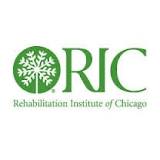Development of Low Cost Devices to Increase Access to Treadmill Training
| Status: | Active, not recruiting |
|---|---|
| Conditions: | Hospital, Orthopedic |
| Therapuetic Areas: | Orthopedics / Podiatry, Other |
| Healthy: | No |
| Age Range: | 18 - 75 |
| Updated: | 4/21/2016 |
| Start Date: | January 2008 |
| End Date: | September 2016 |
The goals of this Model System Program are to expand upon and advance the findings and
outcomes of previous and current Model Systems clinical research, to continue to develop and
study the effectiveness of innovative treatment strategies for persons with spinal cord
injury (SCI); and to evaluate the benefits of a well-designed, comprehensive, coordinated,
interdisciplinary continuum of care that lead to improved outcomes for all persons with SCI.
In order to achieve these goals, the following objectives of the Midwest Regional Spinal
Cord Injury Care System (MRSCICS) model system grant proposal will be accomplished.
outcomes of previous and current Model Systems clinical research, to continue to develop and
study the effectiveness of innovative treatment strategies for persons with spinal cord
injury (SCI); and to evaluate the benefits of a well-designed, comprehensive, coordinated,
interdisciplinary continuum of care that lead to improved outcomes for all persons with SCI.
In order to achieve these goals, the following objectives of the Midwest Regional Spinal
Cord Injury Care System (MRSCICS) model system grant proposal will be accomplished.
The investigators will develop and assess the use of spring-loaded devices to assist limb
swing and forward propulsion during body weight supported treadmill training (BWSTT) (Aim
1). Prototype models of both devices have been developed.
These devices will be:
1. simple to use in the clinical setting;
2. will be easily adjustable to alter the assistance provided; and,
3. will be able to quantify the amount of assistance necessary to facilitate normal
stepping patterns.
The investigators will also evaluate short- and long-term adaptations in locomotor
performance following BWSTT in individuals with incomplete SCI with the use of these
devices. This information will identify the effects of variable assistance at the limbs or
trunk to modulate muscle activity and/or motor performance (kinematics) during stepping to
maximize walking recovery.
swing and forward propulsion during body weight supported treadmill training (BWSTT) (Aim
1). Prototype models of both devices have been developed.
These devices will be:
1. simple to use in the clinical setting;
2. will be easily adjustable to alter the assistance provided; and,
3. will be able to quantify the amount of assistance necessary to facilitate normal
stepping patterns.
The investigators will also evaluate short- and long-term adaptations in locomotor
performance following BWSTT in individuals with incomplete SCI with the use of these
devices. This information will identify the effects of variable assistance at the limbs or
trunk to modulate muscle activity and/or motor performance (kinematics) during stepping to
maximize walking recovery.
Inclusion Criteria:
- non-progressive lesion between spinal levels C1-T10 of > 3 months duration. Subjects
with below T10 will be excluded due to potential lower motor neuron (LMN) injury
- score > 10 on the Lower Extremity Motor Score (LEMS) developed previously to measure
strength in SCI. For the LEMS criteria, preliminary data indicate that subjects with
LEMS < 10 in the chronic stages do not recover walking
- All subjects must require physical assistance to ambulate on the treadmill at a speed
of 4.0 kmph at 0% body weight support (BWS)
- All subjects will have an overground gait speed <.8m/s
- range of motion (ankle: -10 to 30 deg, knee: 0 to 90 deg, hip: -10 to 40 deg)
consistent with gait
- medically stable with medical clearance to participate (absence of concurrent
illness, including unhealed decubiti, infection, cardiopulmonary disease,
osteoporosis, active heterotrophic ossification or peripheral nerve damage in the
lower limbs, history of traumatic head injury)
- able to tolerate 30 minutes of upright (standing) position without orthostasis
(decrease in blood pressure by 20 mmHg systolic and 10 mmHg diastolic; minimized with
ambulatory population)
- women of childbearing potential
Exclusion Criteria:
- women who are pregnant will be excluded due to potential forces at trunk from BWS or
pelvic assistance
- those in concurrent physical therapy to eliminate effects of additional interventions
We found this trial at
1
site
Rehabilitation Institute of Chicago The Rehabilitation Institute of Chicago (RIC) is an independent, 501(c)3, non-profit...
Click here to add this to my saved trials
